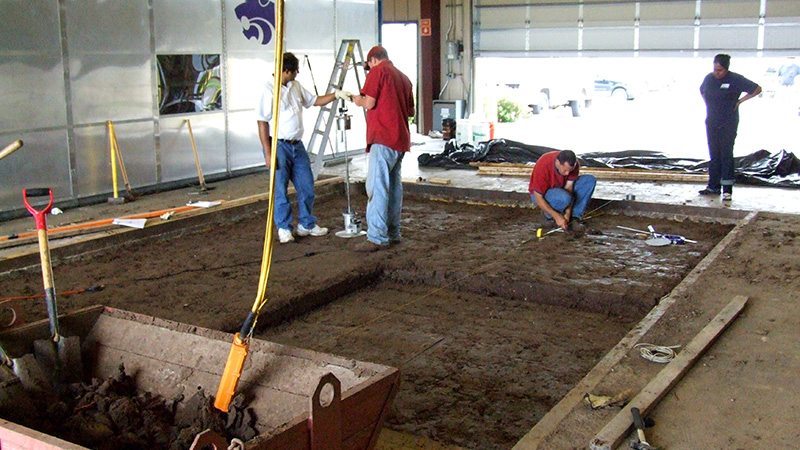
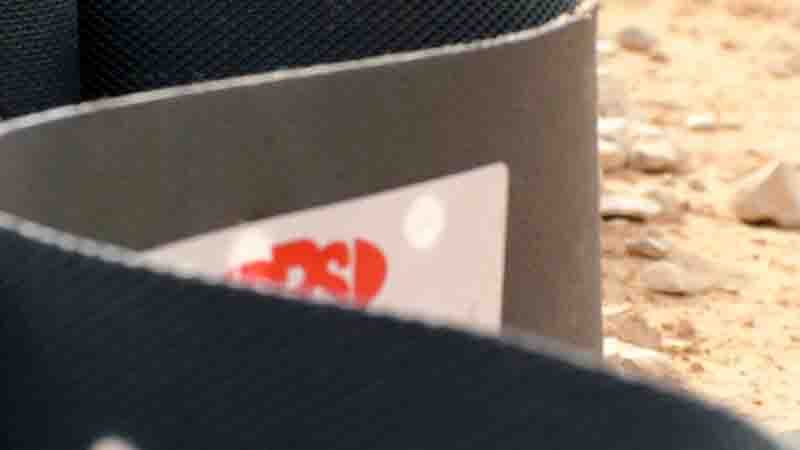
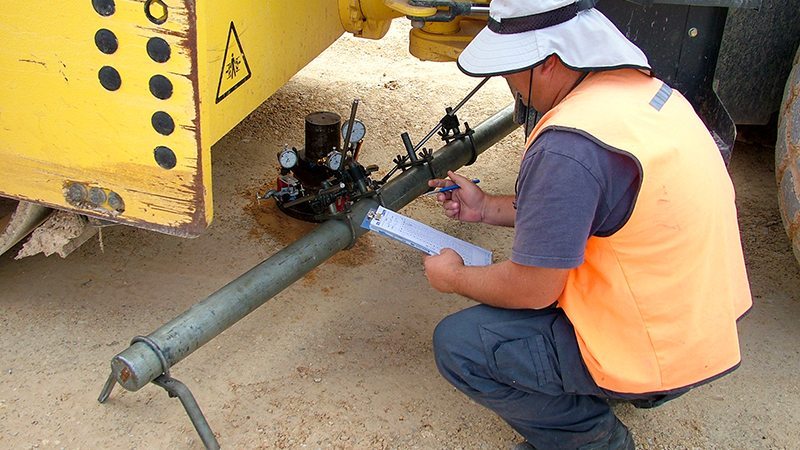
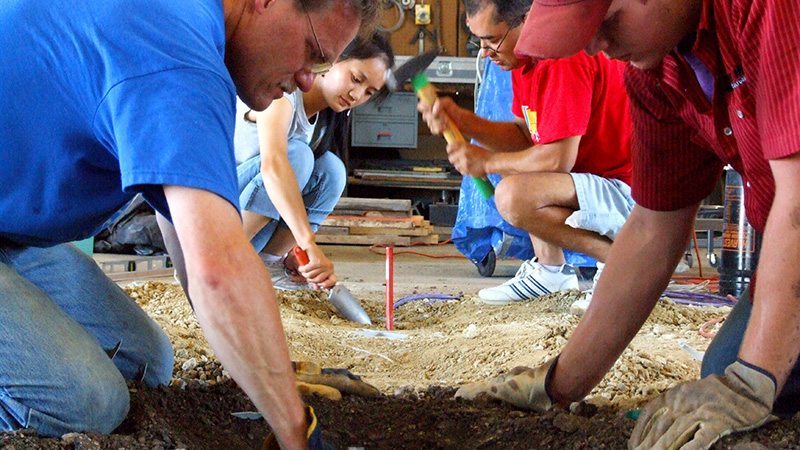
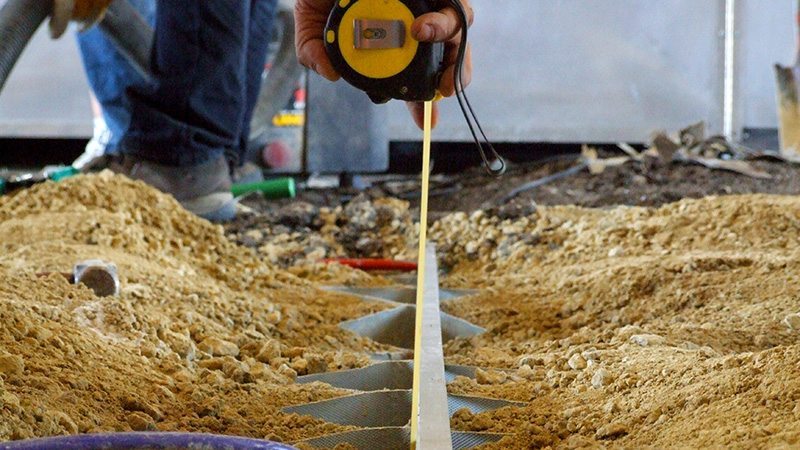
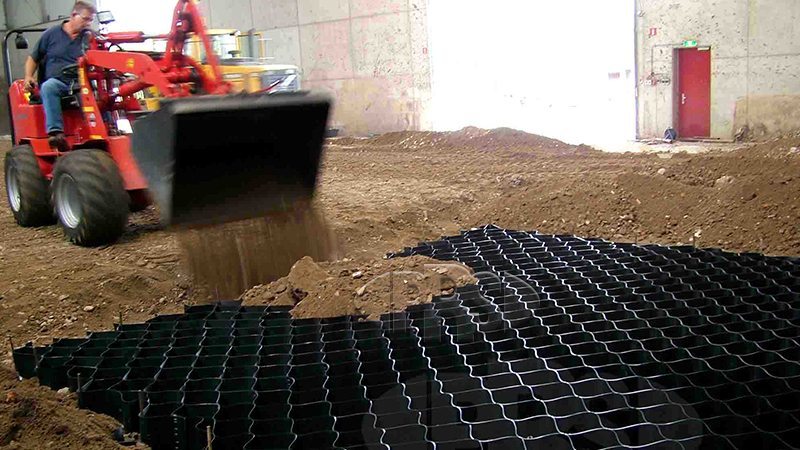
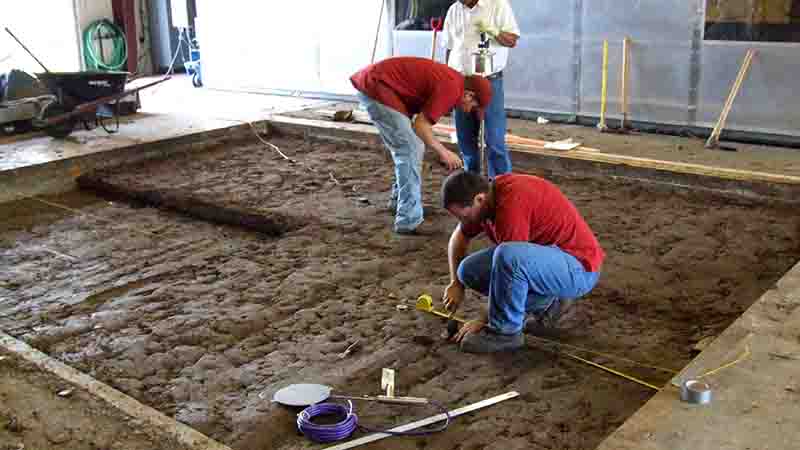







The following is a sample of comprehensive studies, moving wheel tests, static and dynamic loading tests and field trials conducted at the University of Kansas, under Professor Dr. Jie Han over the last five years. These studies demonstrated how Neoloy-based PRS-Neoloy increases stiffness and bearing capacity, distributes stress wider, reduces permanent deformation, and prolongs roadway life compared to unreinforced and HDPE Soft-Cell road bases and help in Slope Reinforcement, retaining walls and many applications using geocell.
Sustainable Road Construction for Heavy Traffic Using High Strength Polymeric Geocells, Resilient Infrastructure Conference Proceedings, London. Pokharel, et al (2016).
In view of the upcoming carbon tax on construction, this paper analyzes the carbon footprint for 2 projects in Alberta, Canada based on quarrying and hauling data, demonstrating the Neoloy-based Geocells reduces carbon emissions more than conventional construction methods significantly. Additional sustainability benefits to be qualified include reduced costs, time and virgin aggregate use.
Validation of Geocell Design for Unpaved Roads, Geosynthetics 2015 Conference Proceedings, Portland, Oregon, Pokharel, et al. (2015).
This paper describes the design method for Neoloy-based PRS-Neoloy geocells and 8 case studies of subgrade improvement and base layer reinforcement of unpaved roads in Canada. The performance of PRS-Neoloy geocells in weak soils for heavy traffic conditions in extreme cold exceeded design expectations, as measured by rutting criteria, maintenance requirements and visual serviceability.
Causeway Design with PRS-Neoloy Geocells, Proc. of Design and Practice of Geosynthetic-Reinforced Soil Structures, Pokharel, et al. (2013).
The paper discusses the design, construction and performance of a PRS-Neoloy reinforced causeway in Alberta, Canada for oversized trucks over very weak Muskeg. Visual observations show that the Neoloy reinforced-section stood firm during the critical time of soil thawing, whereas connector roads built with conventional methods failed.
Summary of Research On PRS-Neoloy Geocell-Reinforced Base Courses, Proc. of Design and Practice of Geosynthetic-Reinforced Soil Structures, Bologna, Italy, Han, et al (2013).
A summary of research conducted at the Univ. of Kansas on PRS-Neoloy reinforced base courses showed that PRS-Neoloy reduced vertical stresses, reduced permanent and creep deformations, and increased elastic deformation, stiffness, and bearing capacity of base courses.
Performance of Geocell-reinforced RAP Bases over Weak Subgrade under Cyclic Plate Loading. Geotextiles and Geomembranes. (Thakur, et al 2012)
The use of PRS-Neoloy (NPA) geocells to confine RAP to minimize increased or excessive permanent deformation under traffic loading was tested showing smaller permanent deformations and reduced vertical stresses more than the unreinforced RAP bases. Strain measurements demonstrated that the PRS-Neoloy reinforced RAP base behaved as a slab while the unreinforced base behaved as a tensioned membrane. PRS-Neoloy improved the life of reinforced RAP base sections by a factor of ~10.
Onsite Use of Recycled Asphalt Pavement and Geocells to Reconstruct Pavements, Mid-America Transportation Center. Han, et al. (2012).
On-site use of recycled asphalt pavement materials has obvious benefits from economic, to environmental, to sustainability points of view. This research demonstrated the benefits of using recycled asphalt pavement (RAP) materials in PRS-Neoloy geocell-reinforced base courses with a thin new overlay.
Tough Cells – Neoloy-based PRS-Neoloy for Sustainable Roadway Applications, Roads and Bridges, Han, et al (2011).
Summary of comprehensive studies, tests, and field trials at U of Kansas demonstrating how Neoloy-based PRS-Neoloy increases stiffness and bearing capacity, distributes stress wider, reduces permanent deformation, and prolongs roadway life, compared to unreinforced and HDPE-geocell reinforced road bases.
Accelerated Pavement Testing of Unpaved Roads with Geocell-Reinforced Sand Bases, Transportation Research Board, Florida, Yang, Han, et al (2011).
Full-scale moving wheel test results demonstrated that Neoloy-based PRS-Neoloy improved the stability of unpaved roads and reduced the permanent deformation – with sand infill performing at the same level as high-quality A1 aggregate.
Effect of Infill Material on the Performance of PRS-Neoloy-reinforced Bases, 9th International Geosynthetics Congress, Brazil, Han, et al, (2010).
Plate load tests demonstrated how Neoloy-based PRS-Neoloy reinforcement significantly improved the performance of inferior quality infill materials, such as sand and quarry waste, compared to unreinforced bases.
Creep Deformation of Geocell-reinforced Recycled Asphalt Pavements, GeoFrontiers, Dallas, Thakur, Han, et al (2010).
Neoloy-based PRS-Neoloy can reduce creep deformation of RAP, therefore enabling its wide-spread use. Three laboratory tests in a test box were used to investigate the role of lateral confinement in reduction of creep deformation of RAP. The test results showed that lateral confinement could minimize the creep deformation of RAP.
Behavior of Geocell-Reinforced Granular Bases under Static and Repeated Loads, IFCEE, Florida, Pokharel, et al (2009).
The study of reinforced bases under static and repeated loads on a loading plate showed that the single geocell could increase the stiffness by approximately 50% and the maximum load by 100% as compared with those of the unreinforced base.
Load Bearing Tests on Bearing Capacity of PRS-Neoloy-Reinforced Bases, Conference on Bearing Capacity of Roads, Railways and Airfields, Illinois, Pokharel, Han, et al (2009).
One-fifth of pavement failures are due to insufficient structural strength – improved sustainable pavement stabilization techniques, such as PRS-Neoloy are needed. Static and dynamic plate testing showed an increase in bearing capacity, stiffness and elastic deformation with reduced permanent deformation.
Experimental Study of Reinforcement of PRS-Neoloy vs. HDPE-based Geocell, Transportation Research Board, Pokharel, Han, et al (2009).
Plate tests evaluated the influence factors on a single geocell on sand – geometry and material. The geocell with a higher elastic modulus had a higher bearing capacity and stiffness for the reinforced base. Neoloy-based PRS-Neoloy increased bearing capacity and stiffness and reduced settlement of the compacted sand base course significantly more than geocells fabricated from HDPE.